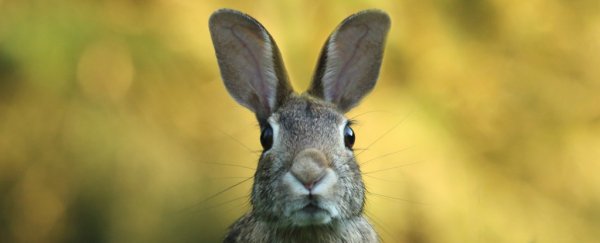If you've ever wondered why rabbits and hares never evolved to be the size of horses, scientists have now got the answer.
It might sound like a flippant question, but it gets to an important part of evolutionary science: What is it that causes some animal taxonomies to have such a wide variation in size, while with others it's very small?
For example, lagomorphs – which include rabbits and hares – don't vary much in size, whereas the closely related rodents can go all the way from the tiny pygmy mouse to the chunky capybaras with hundreds of times as much mass.
"The largest living wild lagomorphs weigh only about 5 kg (11 lbs) on average, a tenth of the largest living rodent, the capybara," says vertebrate paleontologist Susumu Tomiya from Kyoto University in Japan.
"But some breeds of domestic rabbits and other extinct species can weigh up to 8 kg. We were surprised by this and so began to investigate what sort of external forces keep wild lagomorphs across the world from evolving larger body sizes."
The researchers analyzed lagomorph sizes past and present, looking at the fossil record and evolutionary history of the mammals, before turning their attention to other ecological factors. It turns out that the presence of ungulates, or hoofed animals, can be linked to lagomorph size.
Following up on the lead, the team looked at energy use across different sizes of lagomorphs and ungulates. They found that once lagomorphs reach around 6 kilograms (about 14 lbs) in mass, they're at a competitive disadvantage to ungulates.
A return to the fossil record for North America backed up the idea that the smallest contemporaneous ungulate in an area was a big factor in determining the largest lagomorph – anything larger had a lower chance of survival with the bigger, more energy-efficient competitors around.
"We see this pattern today across numerous eco-regions, suggesting that there is an evolutionary ceiling placed on lagomorphs by their ungulate competitors," says Tomiya.
The researchers point out that there are other factors that come into play once lagomorphs become too big to operate at optimum capacity: competition from other animals from the same clade and increased danger from predators.
However, it's the ungulate comparison that seems to have had the most effect in this case. The research feeds into two contrasting ideas about how species evolve: the 'red queen' hypothesis, which ascribes most importance to species competition, and the 'court jester' hypothesis, which says abiotic forces like climate changes have the most impact.
According to the research, it seems that the red queen model is the one that's most significant here, against the backdrop of abiotic forces that aren't anything to do with animal competition.
"An ongoing debate in evolutionary biology concerns whether biological or environmental processes are more important in shaping biological diversity," says Tomiya.
"For some time, the court jester model – ascribing diversity to abiotic forces such as the climate – has been dominant, due to the difficulty of studying biological interactions in the fossil record."
These results serve as a reminder that we can't ignore the effects of ignore species competition, however, as it seems to be the main reason we don't have horse-sized rabbits and hares.
The research has been published in Evolution.
